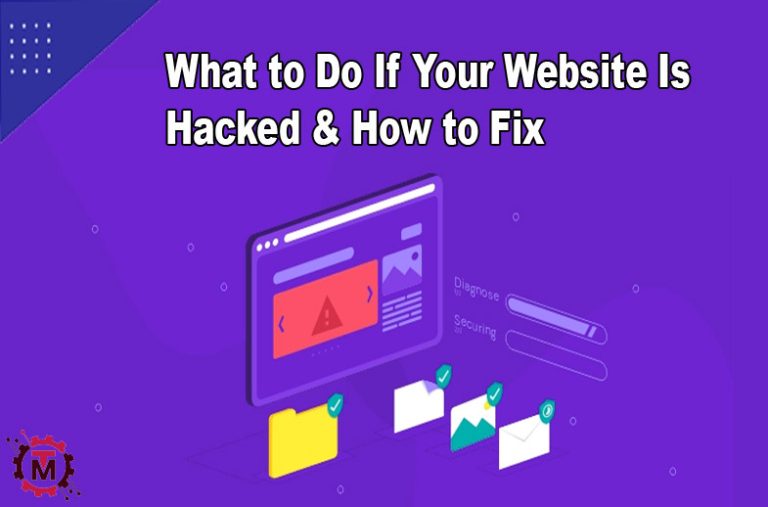Most owners and admins get frustrated when they see their website is hacked. Further, not knowing how to fix it can be a nightmare, resulting in credibility and ranking loss. Google and other search engines may not rank your articles and content at their original place as they were before hacking. Similarly, it hugely impacts business website owners’ trustworthiness and customer base, causing you to stay way behind the competition. Therefore, creating an effective strategy to eliminate this situation is compulsory.
In this guide, we have elaborated on what to do if your website is hacked and how to fix it.
What is a Hacked Website?
A hacked website indicates a site under the control of a suspicious party who has accessed it illegally. With technological advancements, it is more convenient to capture security flaws and direct phishing activities accordingly. In this way, cybercriminals and hackers quickly log in to your admin panel by extracting the passwords and usernames. Consequently, they will perform their desired operations, like stealing the customers’ data, changing your site’s structure, and exposing it to the competitors’ companies to demolish your market credibility and SEO rankings. Hacked websites must be treated with effective tactics to regain their health status and manage other crucial factors.
How to Fix a Hacked Website?
However, it is challenging to fix a hacked website as you have to surpass various processes to eliminate all the threats. But, in the under-section, we have listed all the effective tactics step-by-step.
1 – Determine the Hacking Activity
The foremost thing to do is to determine the hacking activity and the route through which it happens. You must look to determine how much the cybercriminals have impacted your site. Analyze which pages are removed and which are showing false data. Moreover, you can easily learn about the unknown pop-ups and user accounts in your site’s files. As a result, you will direct the next processes in the correct direction.
2 – Take the Website Offline
Taking the website offline is not a compulsory process in this whole strategy. However, it may prove extremely effective if your site suffers serious damage. You can decide by analyzing the extent of damage and the rate of phishing attempts within a specific period. Remove the access from the servers to suspend its online presence. Likewise, putting up a maintenance page can do the same work for you. It will not only save your upcoming customer data but also prevent the spreading of the already present vulnerabilities.
3 – Change the Credentials of the Admin Panel
Changing the current credentials of the administration panel is another important step in this whole process. Soon after taking your site offline and removing it from the web, you have to change its password and username. Go to the settings directly and change your existing username. In the same way, you have to create a new and strong password. Consider integrating upper and lower case alphabets alongside numerals and symbols. As a result, no one will be able to break your codes and enter your account.
4 – Update All Software and Plugins
Next, you must check on the versions and updations of the installed plugins and software. If they are not upgraded to the latest and most advanced versions, you may be at higher risk of being attacked by hackers again. The older versions are not equipped with the new security standards, resulting in significant loss to your site. In fixing, you must allocate proper time to update all the plugins and software. It will boost your performance as well as keep you safe in the near future.
5 – Run a Complete Scan
Now, it’s time to run a complete scan of your website. Numerous tools are available on the web, promising you to deliver all the required outcomes. Utilizing reliable malware scanning software not only removes the flaws but also provides you with enhanced insights. Consequently, you can detect backdoors, infected files, and malicious codes incorporated by hackers. Dealing with these threats prevents further damage to your site and its visitors.

6 – Restore from Backup
Although restoring your website from backup is a simple process, you must be precise and follow some effective tactics when carrying out this function. Try to have access to the most latest files you stored in the database before the onset of hacking activity. As a result, you can save maximum data and website content. Moreover, scan it with the already leveraged malware tool to identify and eliminate the threatening viruses.
7 – Remove Patch Vulnerabilities
Some owners use different patches to optimize their website’s performance. Vulnerabilities in them may also result in the hacker’s attacks. Therefore, it is necessary to remove the patch vulnerabilities to prevent them from other damage. Above all, you can add new patches to enhance your site’s look.
8 – Remove Suspicious Users
While working on the website, you may have to create numerous user profiles to give them access for posting content or maintenance purposes. You must create a list of the essential accounts and remove all other inactive and suspicious users. In addition, create strong passwords for the existing accounts to keep them secure.
9 – Educate Yourself and Your Team
Educating yourself and your team can be hugely impactful when you have a small budget and must deal with hacked websites. Learning all the important tactics and implementing them calculatively enables you to protect your data and website from harmful phishing activities.
Final Verdict
Fixing a hacked website is enormously challenging for beginners as it is time-consuming and complex. But, by following the easy steps mentioned above in this guide and implementing them methodically, you can recover your website. It will also enable you to protect it from future attacks by following robust security measures. Above all, you must focus on maintaining your site’s security as it is not a single-time work. Being proactive will not only protect your credibility but also give a safer experience to your visitors.







